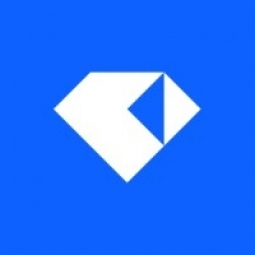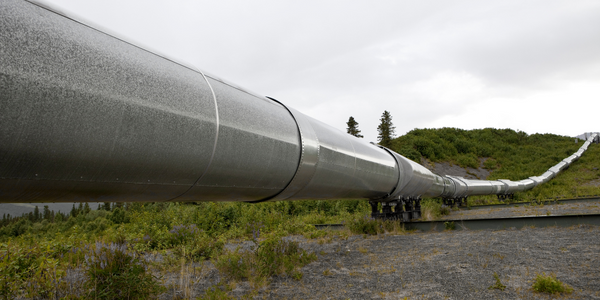Technology Category
- Analytics & Modeling - Real Time Analytics
- Platform as a Service (PaaS) - Application Development Platforms
Applicable Industries
- Automotive
- Oil & Gas
Applicable Functions
- Procurement
- Quality Assurance
Use Cases
- Time Sensitive Networking
- Virtual Reality
Services
- Testing & Certification
About The Customer
Unity is a global leader in the creation and operation of real-time 3D content. The company's platform is used by a wide range of creators, including game developers, artists, architects, automotive designers, filmmakers, and others, to bring their imaginations to life. Unity's platform provides a comprehensive set of software solutions to create, run, and monetize interactive, real-time 2D and 3D content for various devices, including mobile phones, tablets, PCs, consoles, and augmented and virtual reality devices. The company has a large research and development team of over 1,800 people who work alongside partners to ensure optimized support for the latest releases and platforms. Apps developed by Unity creators have been downloaded more than five billion times per month in 2020.
The Challenge
Unity, a leading platform for creating and operating real-time 3D content, was facing significant challenges in its hiring process. The company lacked a solution for email automation, which was causing inefficiencies in their recruitment process. They had little insight into the effectiveness of their messaging, making it difficult to optimize their outreach to potential candidates. Furthermore, they had no visibility into the makeup of their recruitment pipeline, making it challenging to manage and optimize the hiring process. They also lacked the ability to forecast time-to-hire, which made it difficult to plan and manage their recruitment efforts effectively. These challenges were hindering Unity's ability to attract and hire top talent, which was critical to maintaining their position as a leader in the 3D content creation industry.
The Solution
Unity turned to Gem, a recruitment platform, to address these challenges. Gem's solution allowed Unity's recruiters to craft entire outreach campaigns, including set-and-forget follow-ups, which significantly increased response rates. The platform also provided insights into open/click/response rates, enabling the team to adjust their outreach based on recipient behavior. Furthermore, Gem provided visibility into the health of each pipeline, from outreach to offer-acceptance, which led to a 10-day drop in time-to-fill. The team could also look at historical numbers and predict whether they were on track to hit goals based on historic passthrough rates and time-to-hire metrics. Gem's automated follow-ups, outreach stats, and pipeline analytics were key features that helped Unity revamp its hiring process and build a data-driven recruiting culture.
Operational Impact
Quantitative Benefit

Case Study missing?
Start adding your own!
Register with your work email and create a new case study profile for your business.
Related Case Studies.

Case Study
Taking Oil and Gas Exploration to the Next Level
DownUnder GeoSolutions (DUG) wanted to increase computing performance by 5 to 10 times to improve seismic processing. The solution must build on current architecture software investments without sacrificing existing software and scale computing without scaling IT infrastructure costs.

Case Study
Remote Wellhead Monitoring
Each wellhead was equipped with various sensors and meters that needed to be monitored and controlled from a central HMI, often miles away from the assets in the field. Redundant solar and wind generators were installed at each wellhead to support the electrical needs of the pumpstations, temperature meters, cameras, and cellular modules. In addition to asset management and remote control capabilities, data logging for remote surveillance and alarm notifications was a key demand from the customer. Terra Ferma’s solution needed to be power efficient, reliable, and capable of supporting high-bandwidth data-feeds. They needed a multi-link cellular connection to a central server that sustained reliable and redundant monitoring and control of flow meters, temperature sensors, power supply, and event-logging; including video and image files. This open-standard network needed to interface with the existing SCADA and proprietary network management software.

Case Study
Refinery Saves Over $700,000 with Smart Wireless
One of the largest petroleum refineries in the world is equipped to refine various types of crude oil and manufacture various grades of fuel from motor gasoline to Aviation Turbine Fuel. Due to wear and tear, eight hydrogen valves in each refinery were leaking, and each cost $1800 per ton of hydrogen vented. The plant also had leakage on nearly 30 flare control hydrocarbon valves. The refinery wanted a continuous, online monitoring system that could catch leaks early, minimize hydrogen and hydrocarbon production losses, and improve safety for maintenance.

Case Study
Integral Plant Maintenance
Mercedes-Benz and his partner GAZ chose Siemens to be its maintenance partner at a new engine plant in Yaroslavl, Russia. The new plant offers a capacity to manufacture diesel engines for the Russian market, for locally produced Sprinter Classic. In addition to engines for the local market, the Yaroslavl plant will also produce spare parts. Mercedes-Benz Russia and his partner needed a service partner in order to ensure the operation of these lines in a maintenance partnership arrangement. The challenges included coordinating the entire maintenance management operation, in particular inspections, corrective and predictive maintenance activities, and the optimizing spare parts management. Siemens developed a customized maintenance solution that includes all electronic and mechanical maintenance activities (Integral Plant Maintenance).









